This Rock (gown) was a major work, with 5,000 pearls and countless meters of couched gold cord.
I had wanted to make a new high court gown for my early 16th century German wardrobe, but I wanted something different to the usual Cranach-style gowns, as I had already made that style in red velvet, black velvet and green wool. And I also wanted a project which would stretch my embroidery skills.
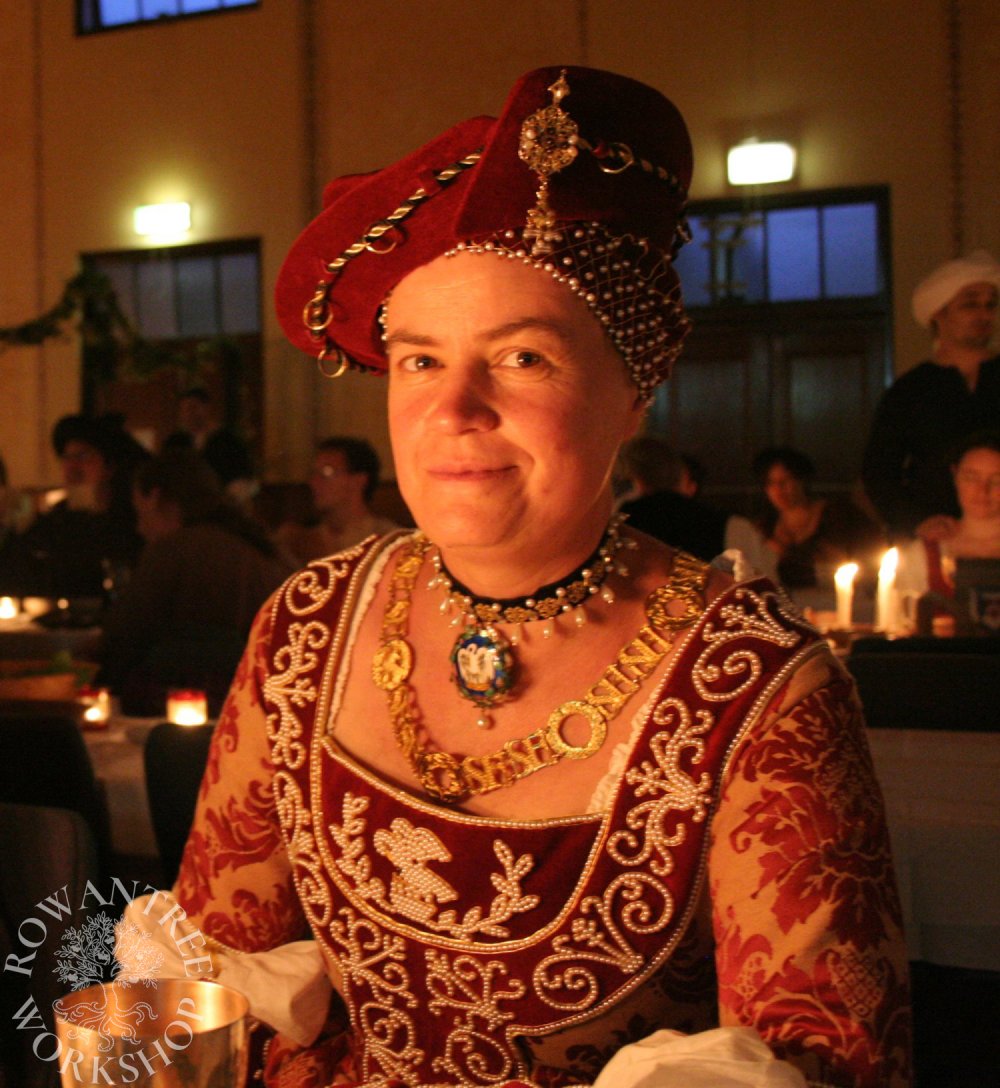
My friend Gabriella had taken me to an upholstery warehouse, where I found the brocade – a serious score in the days before online shopping!
Research and Design
Although not ‘Cranach-style’, this Rock is nevertheless inspired by two paintings by Lucas Cranach. The cut of the Rock is based on one of his earlier works, the St Catherine Altarpiece c1506, which shows a single front panel, with bodice and skirt cut in one, and gathers at the sides.
I first saw this cut in Carl Köhler’s book A History of Costume (1963) and had tried it when I made my gold brocade Rock, so I knew it would work well here.
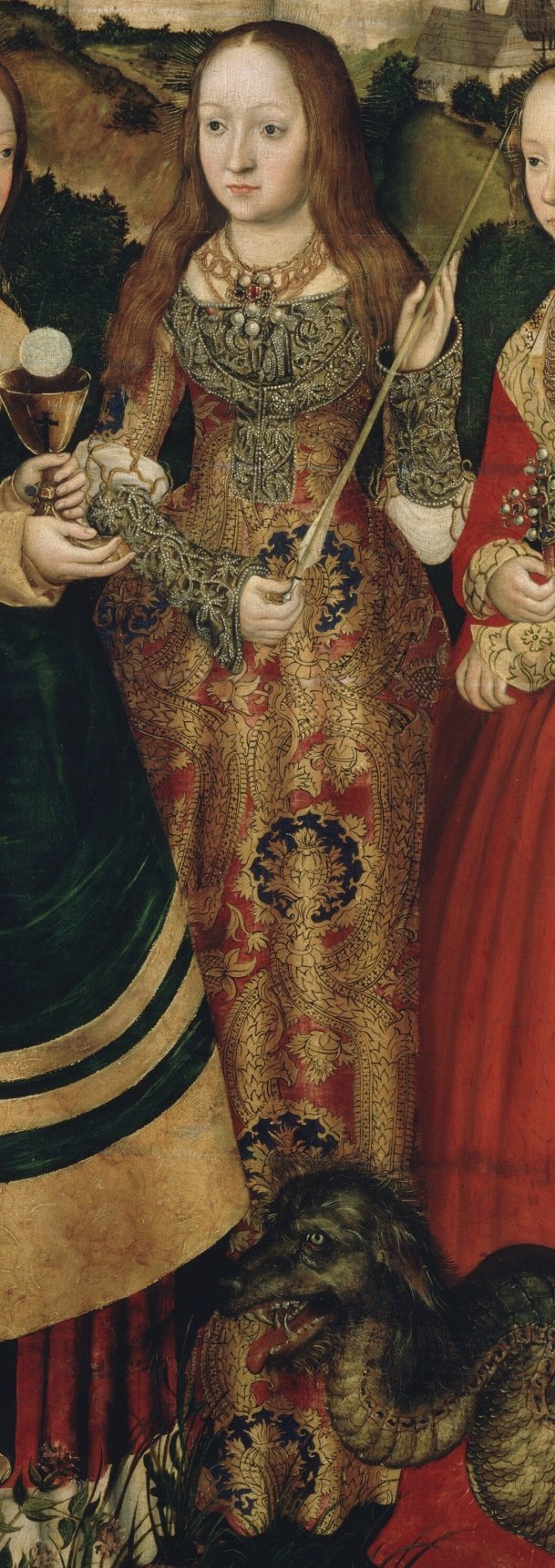
Source: Wikimedia
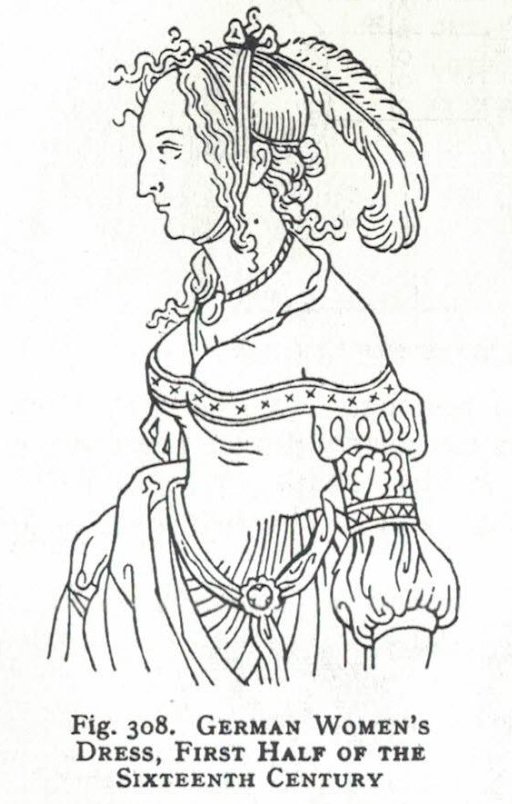
Source: Köhler (1963)
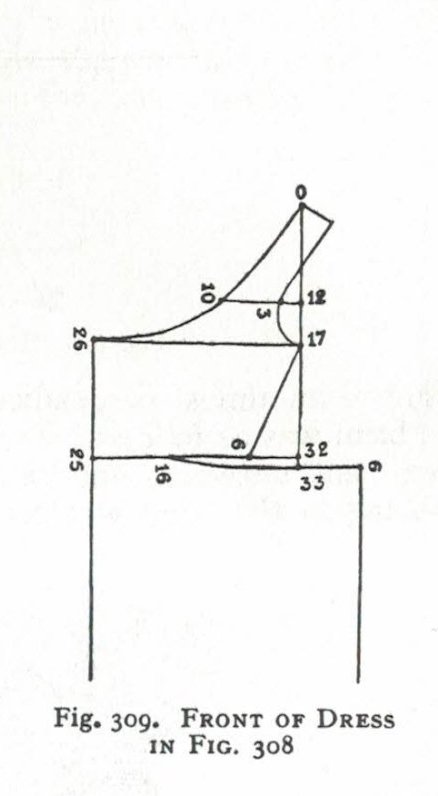
Source: Köhler (1963)
This Cranach painting shows a brocade gown with a heavily pearled border around the neck of the bodice, with an ornate pearled Brustfleck, but no front lacing. It also has heavily pearled lower sleeves, laced to the brocade upper sleeves. The pearled panels are on a plain background, to show them off.
The design of the pearled panels is very ornate – too complex for my first try at this scale, so I turned to another Cranach painting with a simpler pearled design for the bodice border – the Princess of Sidonia. I also used this source for sleeve panels, extrapolating the design from the smaller cuff.
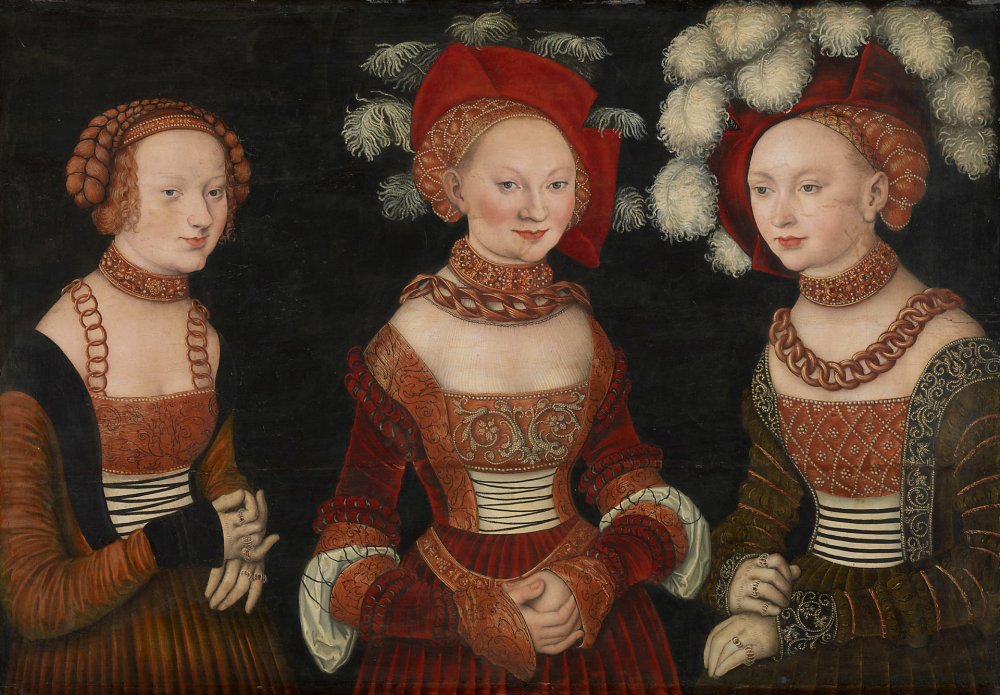
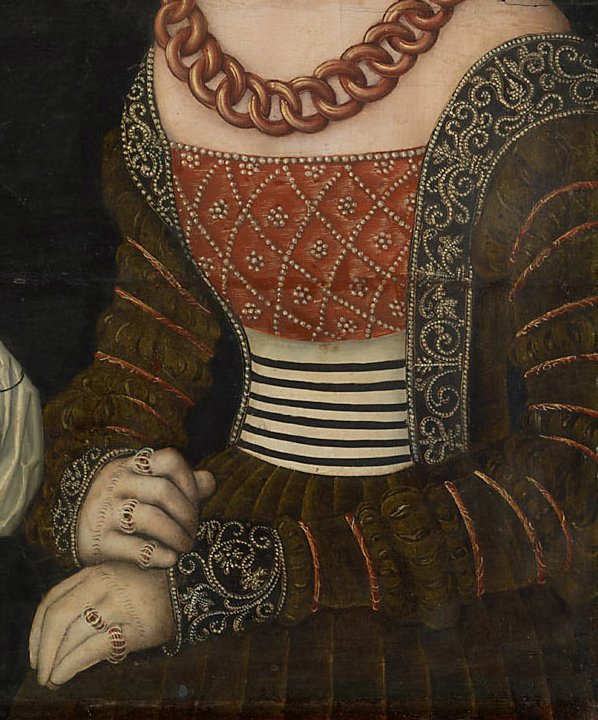
Soucre: Wikimedia
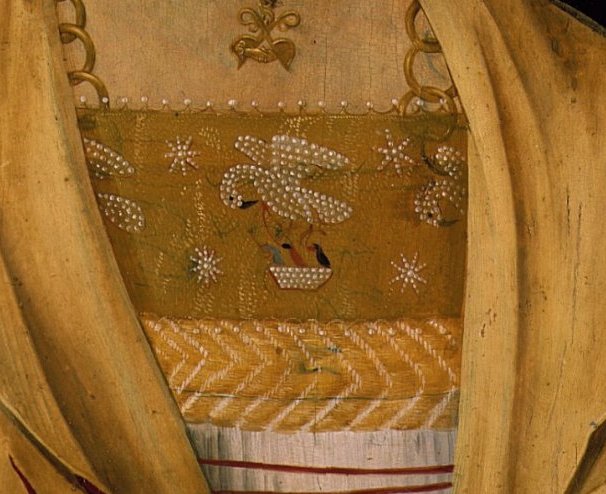
Finally, I used the Brustfleck panel to display a Pelican in it’s Piety and a Laurel wreath – symbols of the SCA Orders of the Pelican and Laurel. Pelicans are a common symbol in renaissance Europe with several early 16th century German examples, including this portrait of the Margrave of Casimir, which formed the basis of my design.
Construction
I patterned the gown and made a mock-up in cheap fabric to check the fit and to pattern the embroidered sections. Based on my designs, I calculated I would need about 4,000 3mm quality faux pearls, which I bought from Photios Bros.
I cut the neckline edge as a single piece of red velvet (mirror around centre back seam), then basted it to a cotton backing. I cut the sleeves and Brustfleck and likewise applied them to their backing. I machine-sewed string to the outside edges of the cotton for reinforcement, then whipped it onto my embroidery frame.

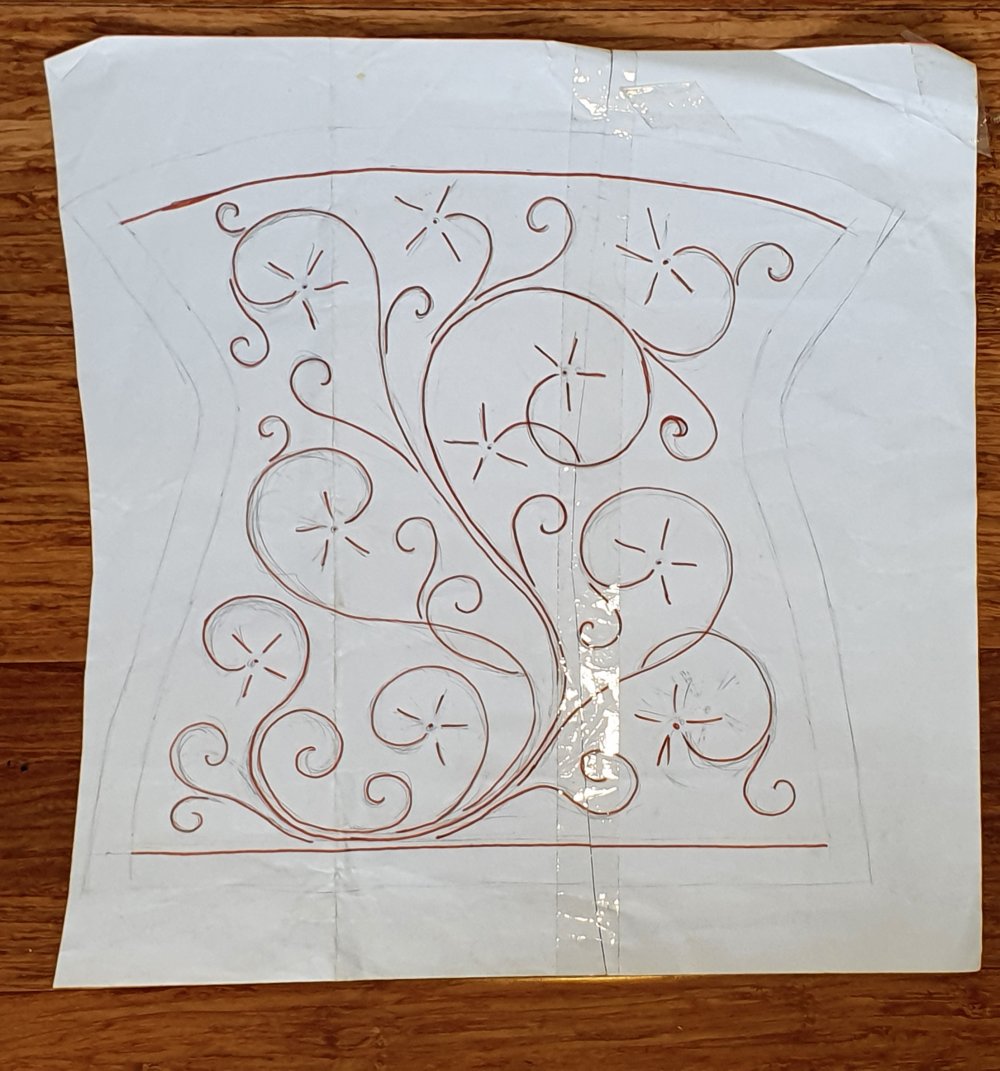
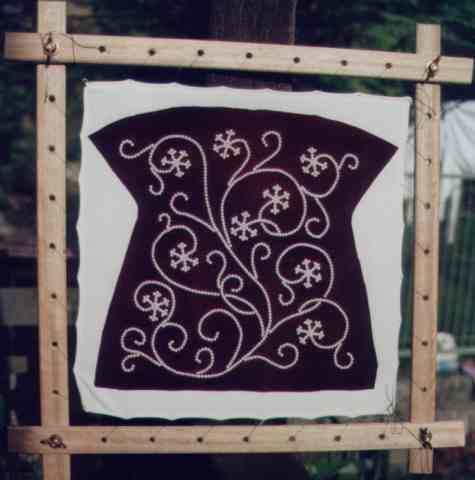
I transferred my designs to the stretched velvet using the prick-and-pounce method, then used a fine brush and white gouache to draw the lines, as recommended by Cennini in his 15th century Craftsman’s Handbook (1993). This worked surprisingly well, with the lines remaining visible over the many months it took to work each panel.
To attach the pearls, I used the medieval approach – pearls strung on linen thread, couched down between each pearl with silk thread. As I discovered when working my Goldwork bookcover, this is much faster than sewing individual pearls and gives much smoother lines. Keeping the pearls under tension with one hand while couching down with the other ensures perfect spacing.
Once the pearls were sewn, I outlined the rows by couching down fine gold cord, as seen in the portraits. The ends are taken to the back with a large-eyed and sewn off. This outlining actually took longer than the pearls, but added a real depth and richness.
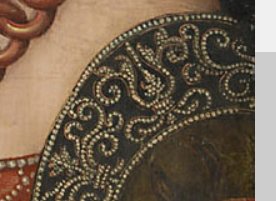
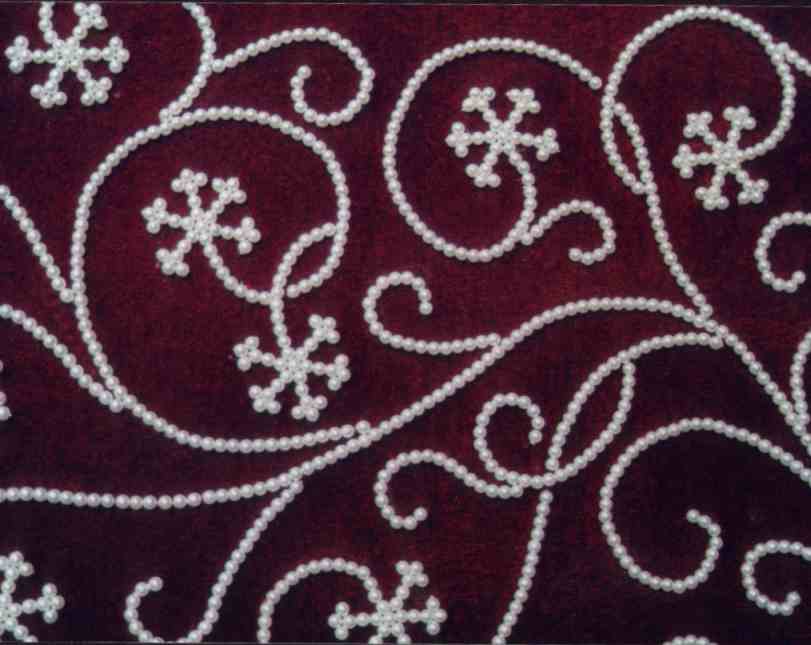
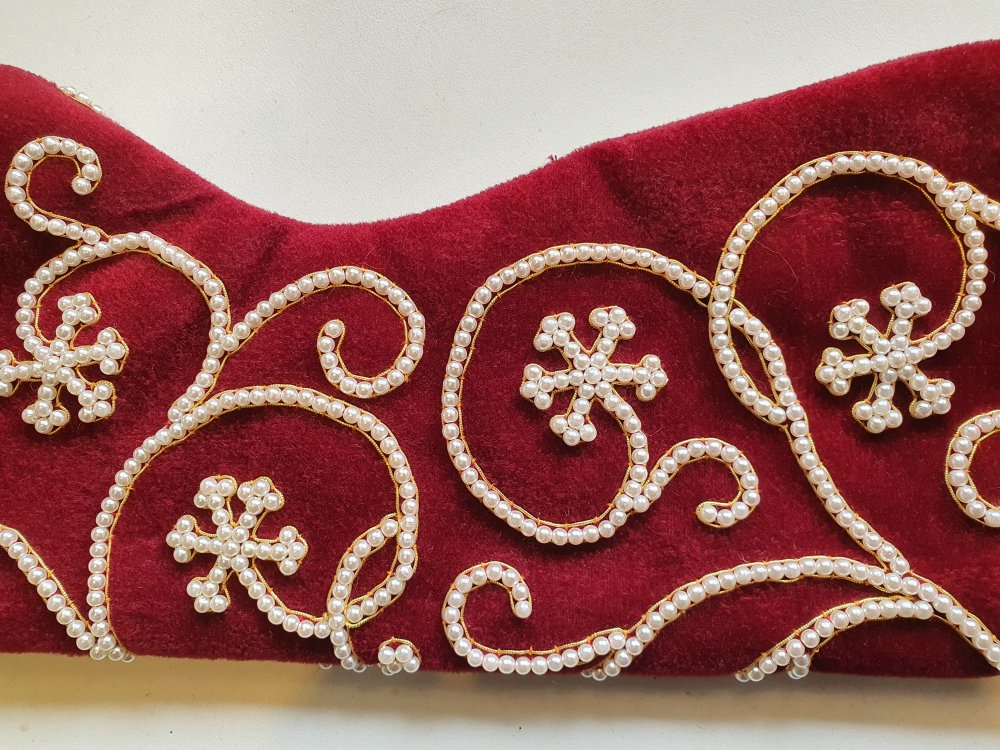
It took me well over a year to work the two sleeves, neckline and Brustfleck. I ran out of pearls and was relieved I could still buy matching ones – I needed another 1,000.
With the embroidery complete, I could construct the Rock. I cut out the front panel (leaving the horizontal slits uncut), back bodice, sleeves and two back skirt panels, taking care that the patterns were centred and symmetrical and matching patterns on seams where possible. I cut a lining of heavy red cotton for the bodice sections and sleeves.
I was worried about the slit fraying, so I did as much work as possible before cutting it. I sewed the front and back bodices together, and the upper sleeves. I sewed the back skirt panels together then sewed them to the front skirt. I cut a lining strip for the top of the skirts, cut the horizontal slit and sewed the strip to the lining, then sewed the sleeve and bodice seams, leaving one side open.
I sewed up and pinned in the lining and slip-stitched it in along the open side and the waist seam, including the slit, so all was secure. I pleated up the skirt with a pair of strong draw-threads and sewed this to the finished bodice waist, with small overcast stitches.
I cut the embroidered neck panel from it’s backing, then joined the centre front seam. I sewed gold-edged braid around the outside edge, then turned under the hem (clipping as needed) and basted it. I sewed the braid around the inside edge but did not turn it.
Working on a dress-form, I pinned the assembled embroidery to the brocade neck edge, ensuring it lay smoothly on the brocade. I took it off the form, sewed the neck edge, turned it and basted, then slip-stitched the lining all around to finish it. Then I sewed down the outer edge of the embroidery all around, through both brocade and lining.
I sewed gold braid along the top edge of the Brustfleck, turned this and then lined the piece, basting the lower edge. I pinned this in place with the lower edge behind the finished neckline. The seam here provides some shape to the front of the bodice.
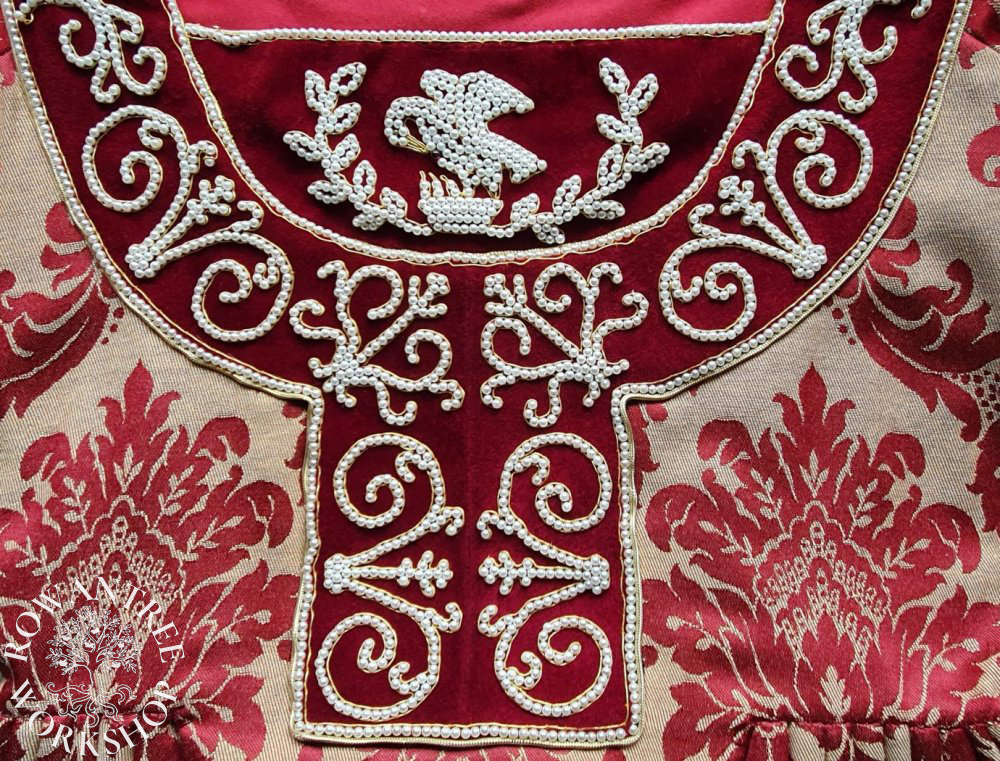
I cut out the lower sleeves, seamed them and sewed gold braid to the open ends, and to the open end of the upper sleeves. I tried on the Rock, pinning length of ribbon in place to join the upper and lower sleeves. I replaced these by sewing on lengths of gold rayon braid, then finishing the sleeve linings.
Finally, I hemmed the Rock and closed the side opening with hooks and eyes.
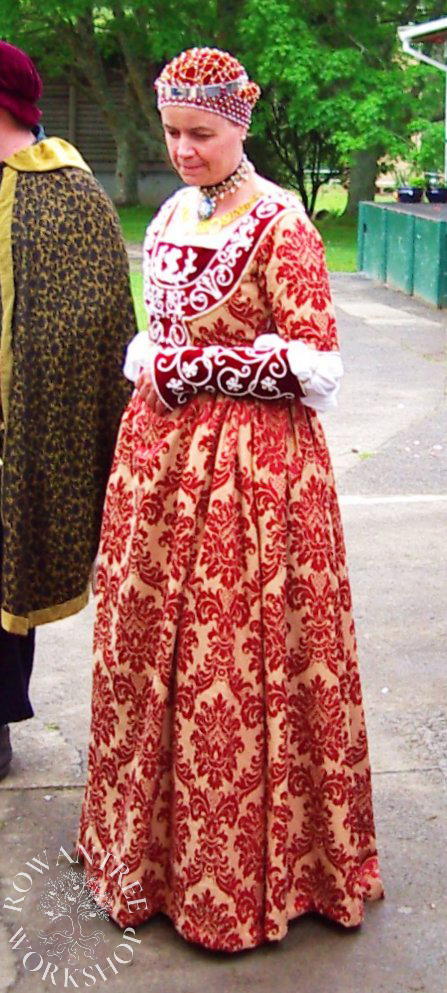

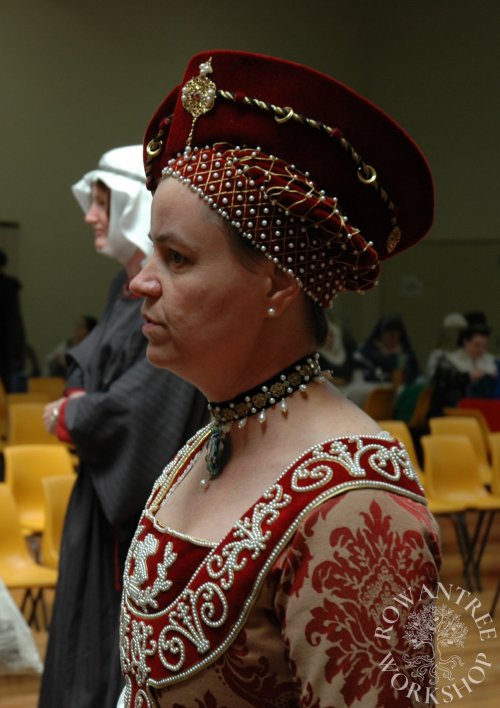
Afterthoughts
I loved this outfit and wore it for many years, until my changing shape meant it no longer fit. When I did a big wardrobe cull in 2020, I did not give it away, or pack it away with my other ‘keepsake’ gowns, but kept it hanging in my active wardrobe.
Perhaps it is time to dig out the hoarded brocade scraps and see if I can re-work it to wear again…

